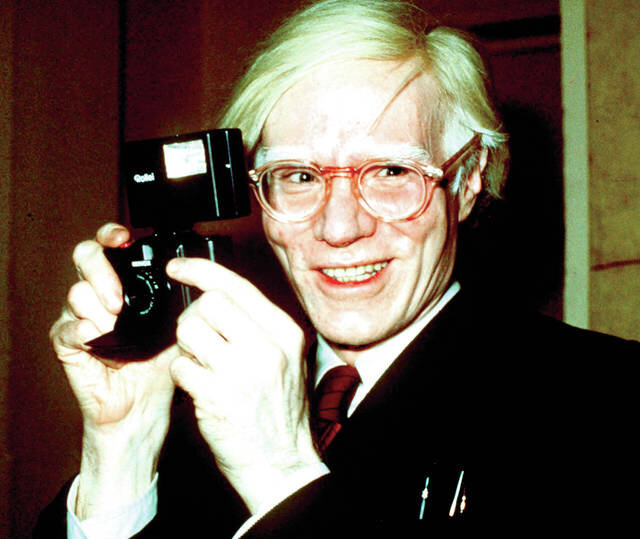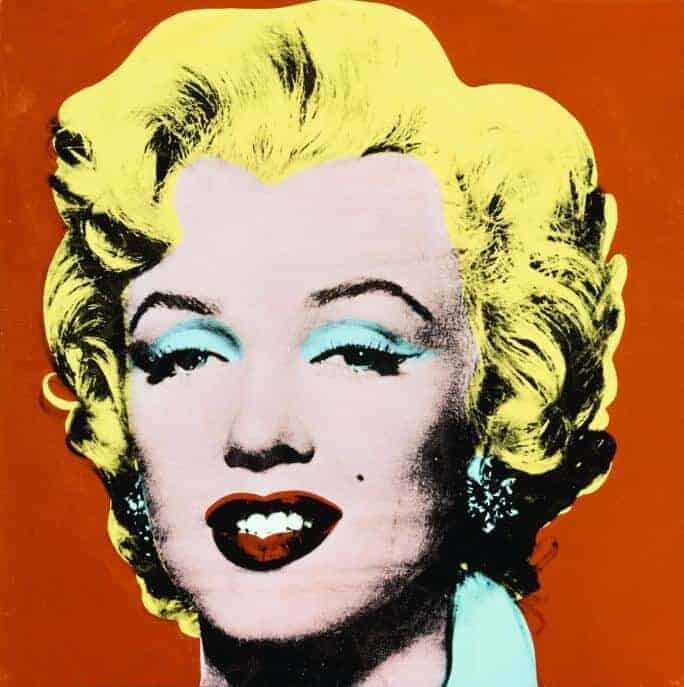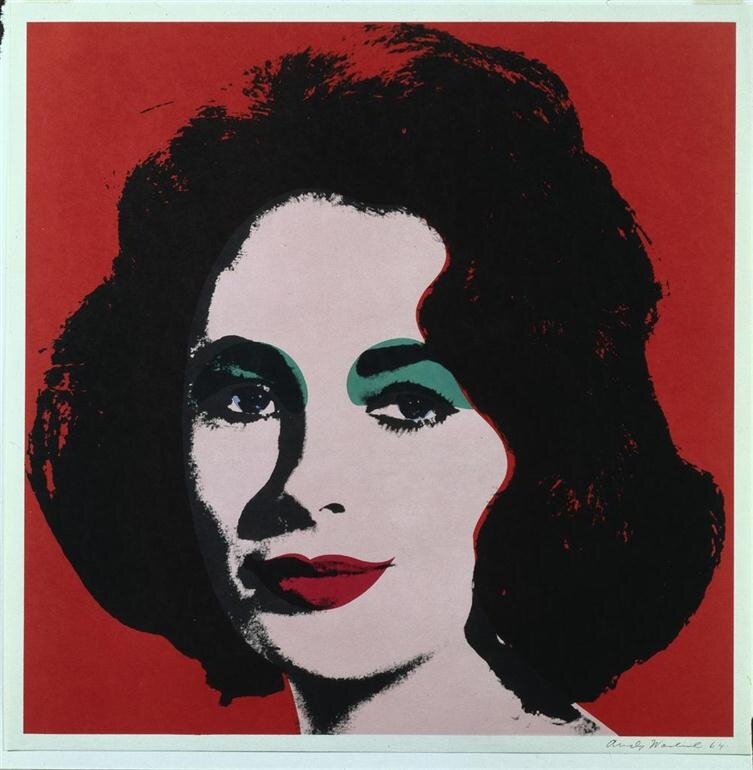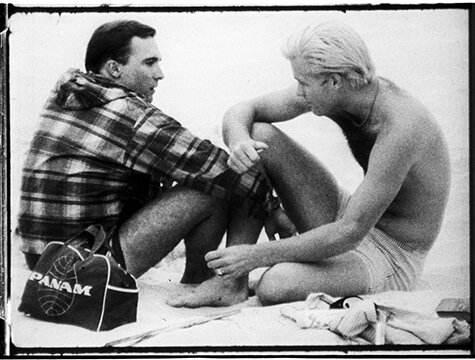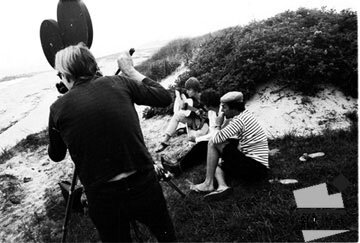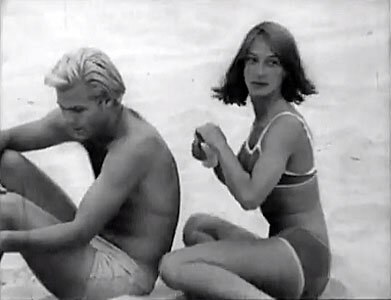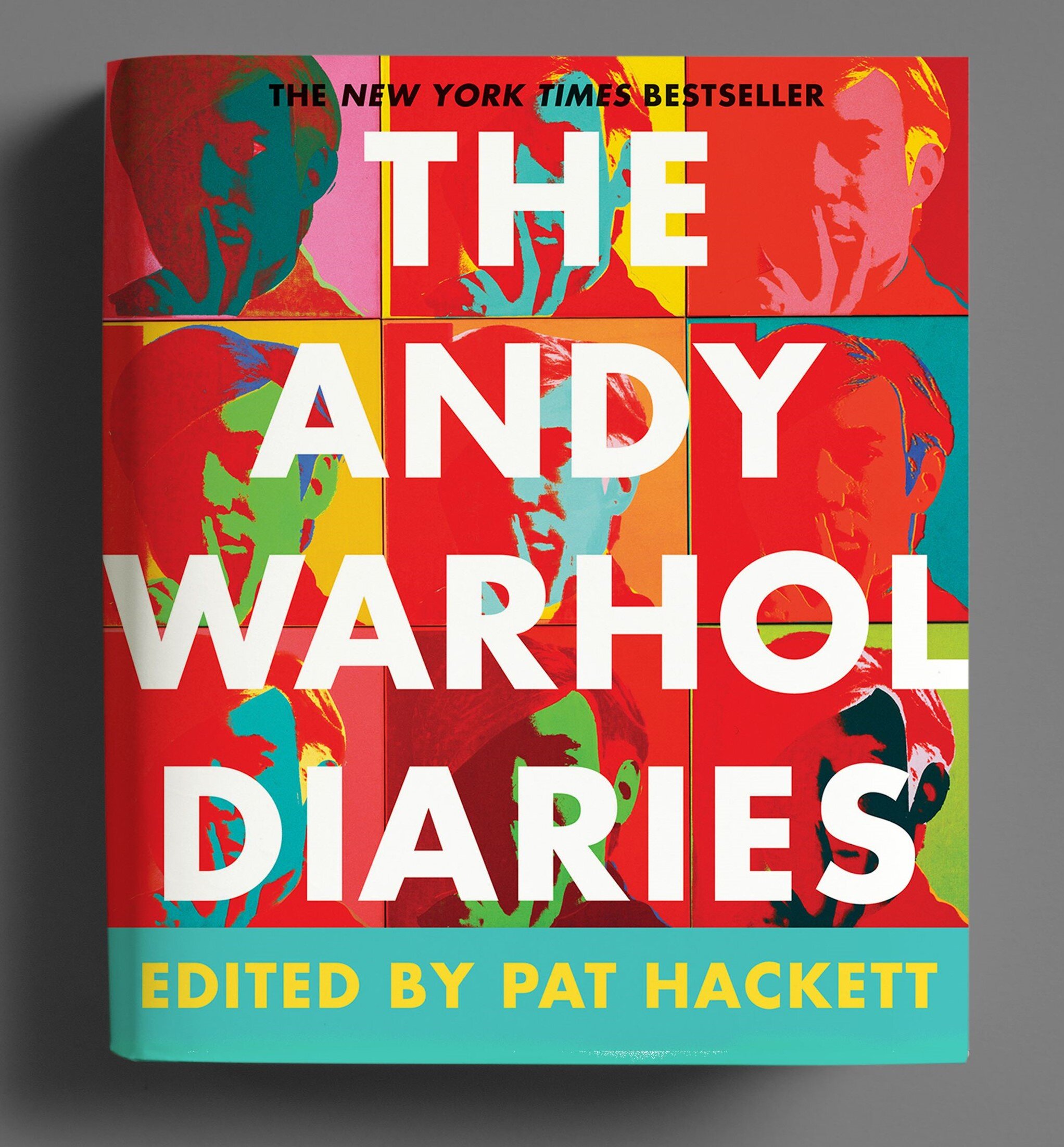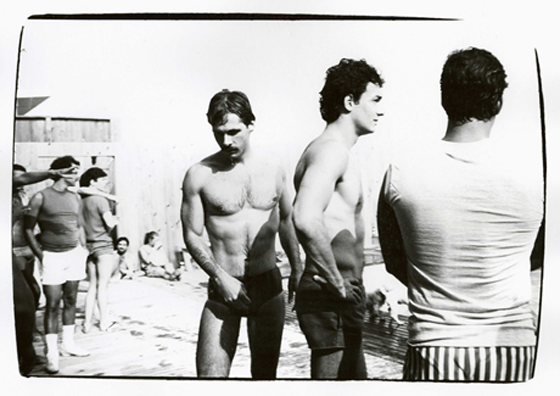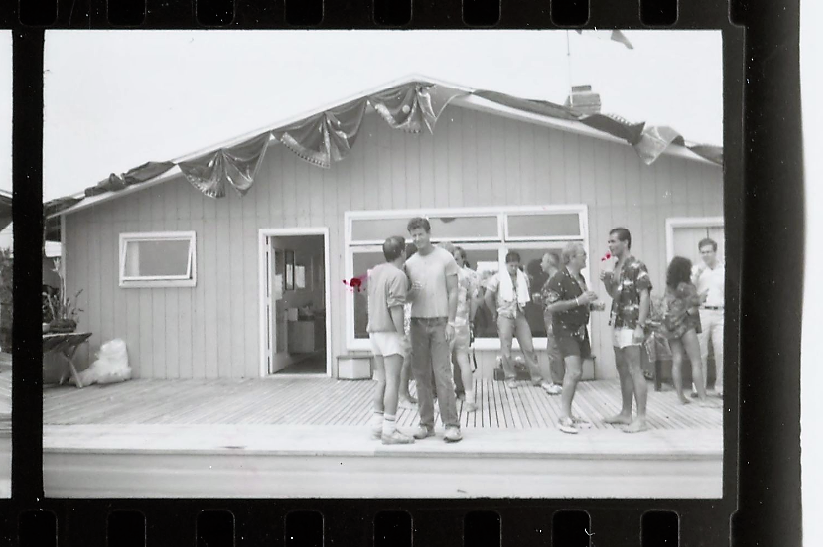Celebrity history- Andy Warhol Fire Island Diaries 1982, and more…
1928-1987
Like many celebrities Artist Andy Warhol found his way to Fire Island, and of course brought his camera…
Andy Warhol was a successful magazine and ad illustrator who became a leading artist of the 1960s Pop art movements. He ventured into a wide variety of art forms, including performance art, filmmaking, video installations and writing, and controversially blurred the lines between fine art and mainstream aesthetics. Warhol died on February 22, 1987, in New York City.
Andy Warhol has a long history with Fire Island. Arriving first in 1949 with Corinne-Kessler.
1965. He arrives on Fire Island over Labor Day Weekend to film “My Hustler.”
Time Out says
Made on Fire Island beach, this is vintage Warhol, with rather more structure than usual. The camera pans between a bronzed, blond hustler, statuesque on the sand, and an ageing queen talking on the verandah of a beach house. The queen provides most of the soundtrack: part monologue, part conversation in best New York camp style, witty, vicious, outrageous, etc. Dramatic interest of sorts is provided by the arrival of a female neighbour intent on seducing the hustler, and shortly after of the Sugar Plum Fairy, another hustler, also with a lustful eye on the beach. The three have a bet as to which one will succeed; and the second half is filmed with a static camera in the bathroom while they wash and shave. At the end, after they've all tried to pull him, offering variations on the wealth/possessions theme, we never get to know who wins out. But that's unimportant: the myth of the ending is a literary hangover.
Back in 1979 on the ferry to the Pines with silk screen printer Rupert Smith.
1982. Pop Artist celebrity Andy Warhol arrives in the Pines for a visit with Calvin Klein, David Geffen and friends. Knowing his aversion to the sun he comes prepared. He later writes about it in his diary which becomes a book in 1989.
Andy arrives by Seaplane
He arrives at Calvin Klein’s and meets media mogul David Geffen.
(R) Andy Warhol, David Geffen and Andy’s boyfriend Jon Gould. (Below) David Geffen & Calvin Klein.
Andy Warhol
With boyfriend Jon Gould.
All photos by Andy Warhol. Photos of Andy Warhol by Christopher Makos.
Smile for the camera.
Andy captured the day filled with many from the Fashion world having a relaxing day in the Pines at Calvin Klein / David Geffen’s home. Found in Andy’s contact sheets and never published.
Andy, designer Chester Weinburg and Jon Gould
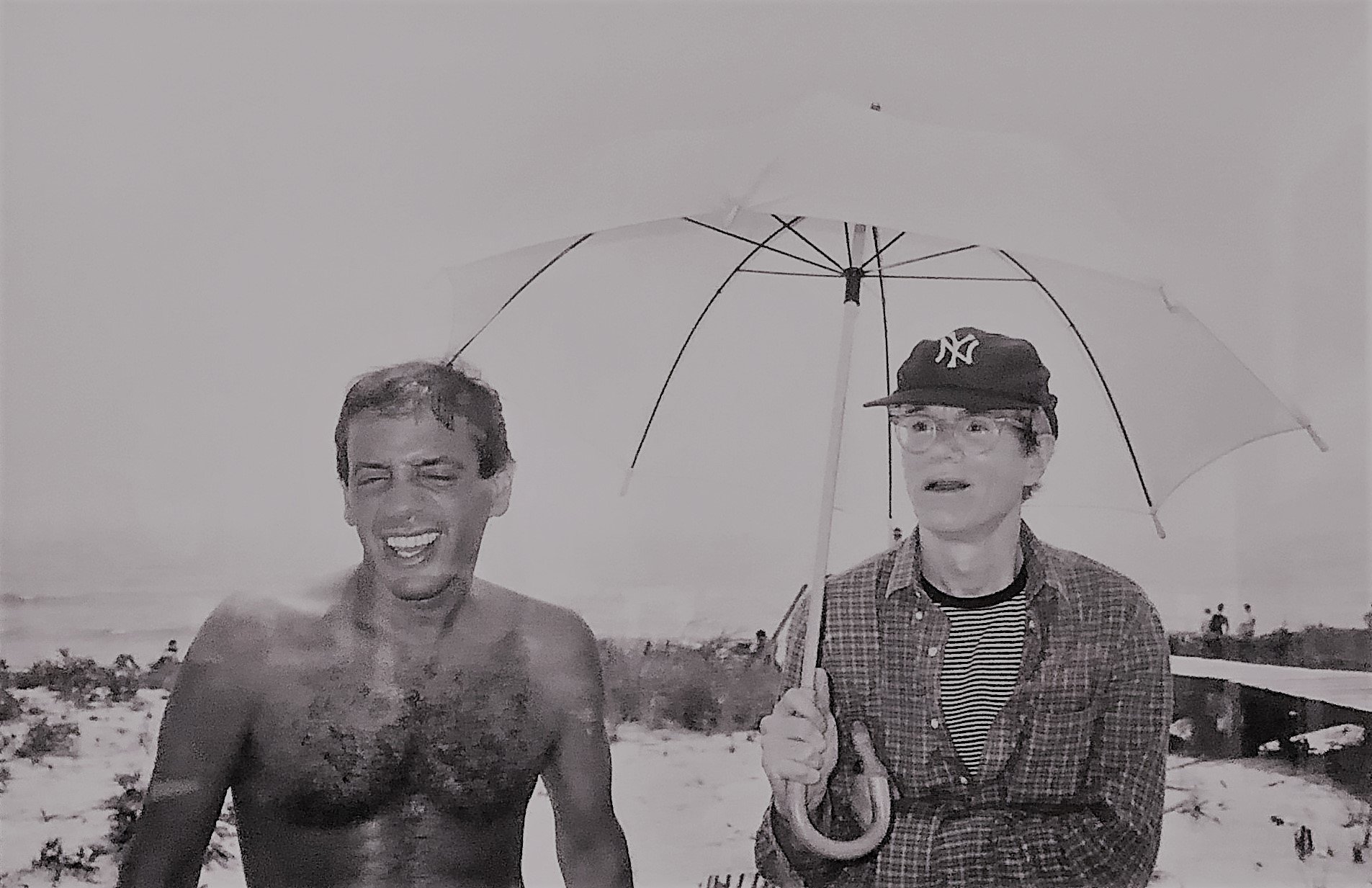
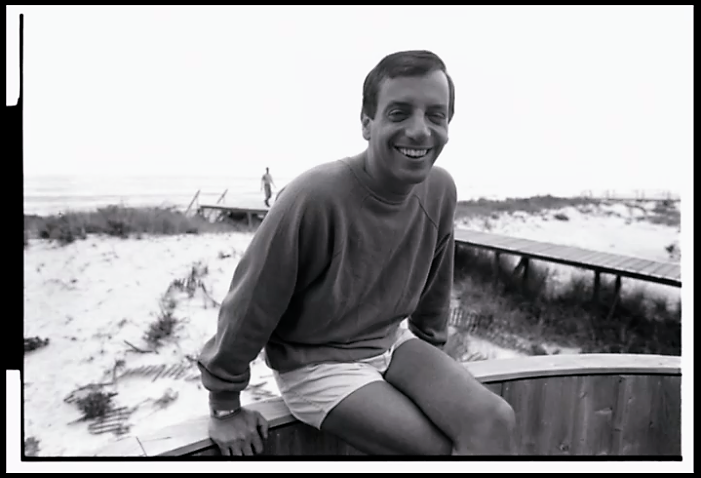
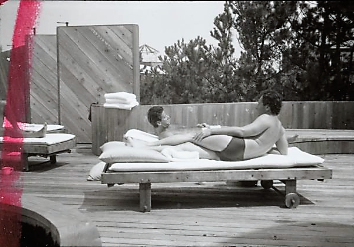
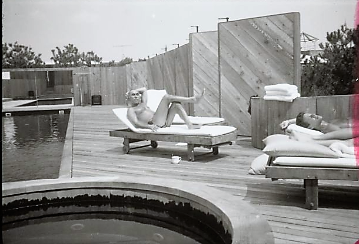
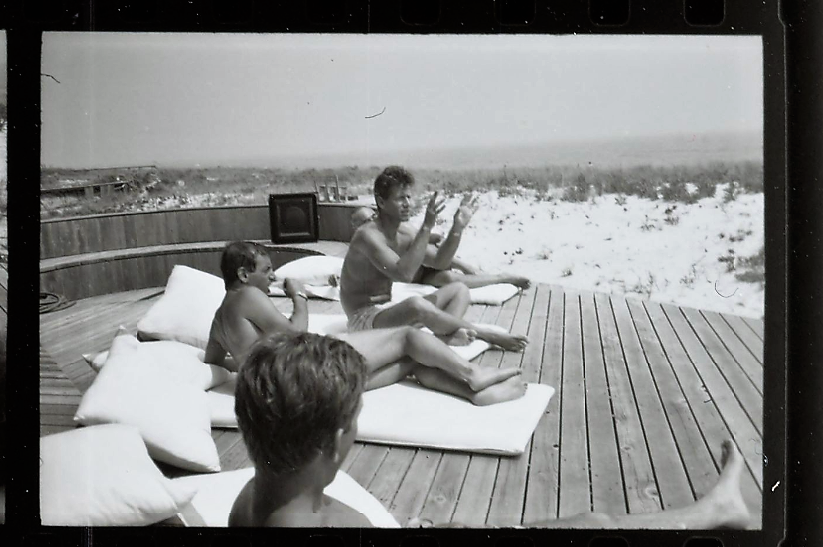
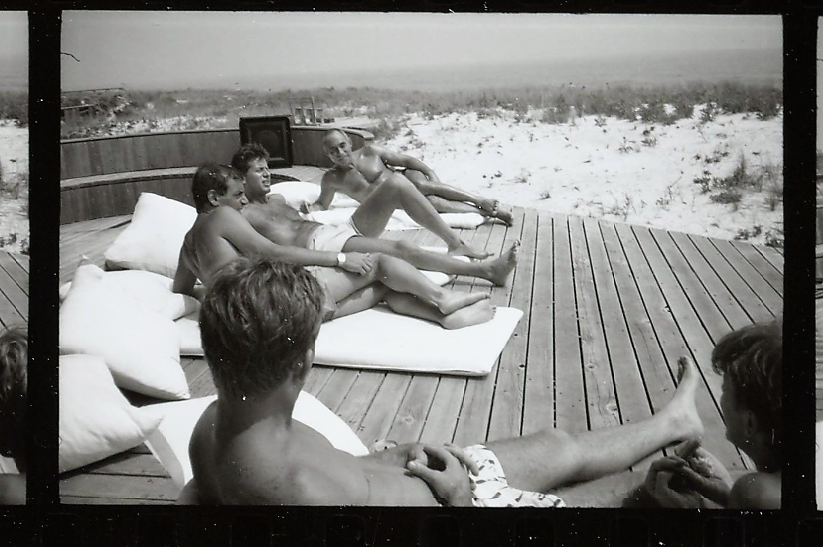
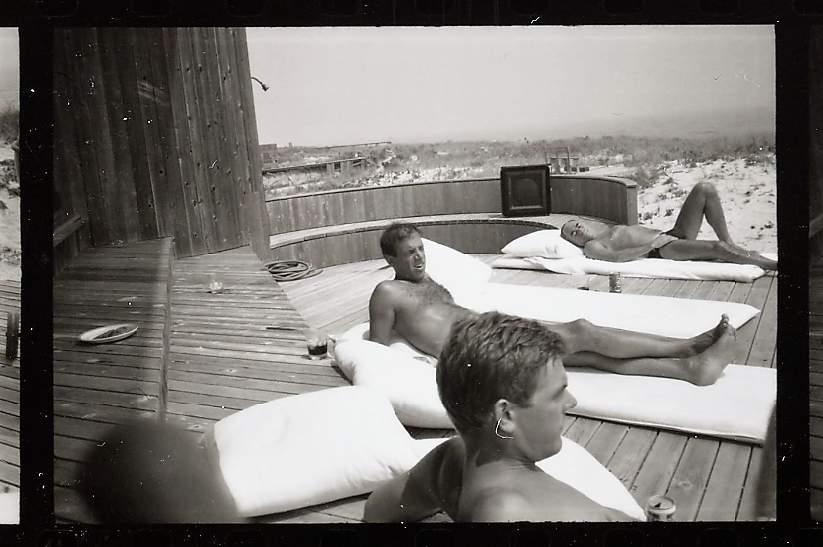

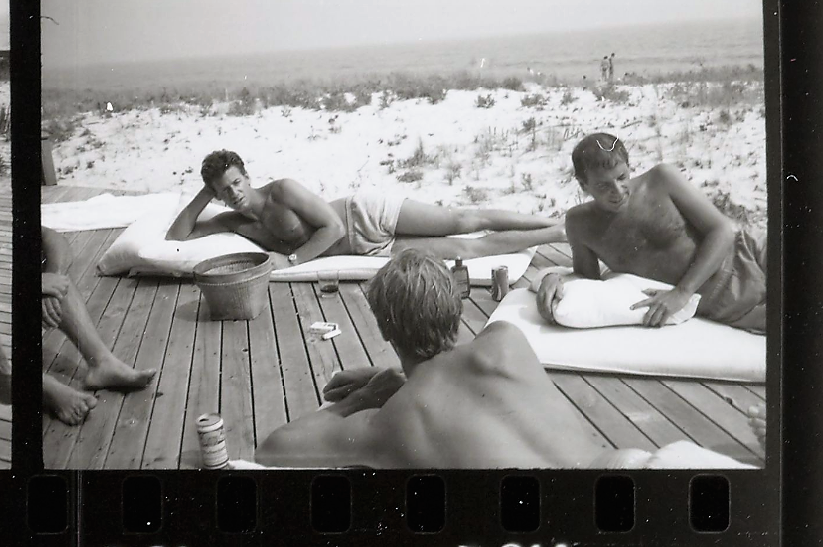
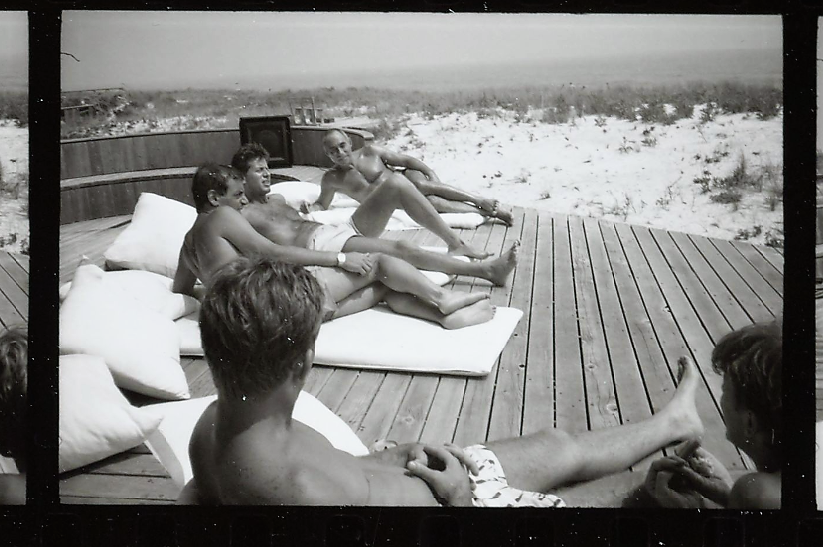
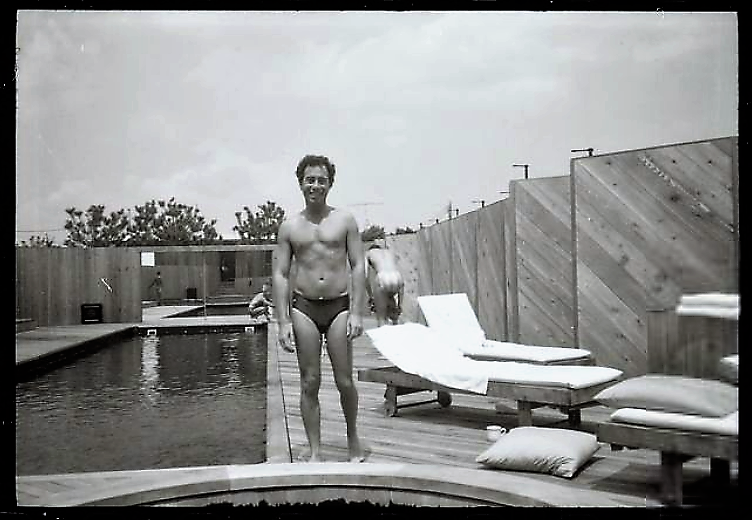
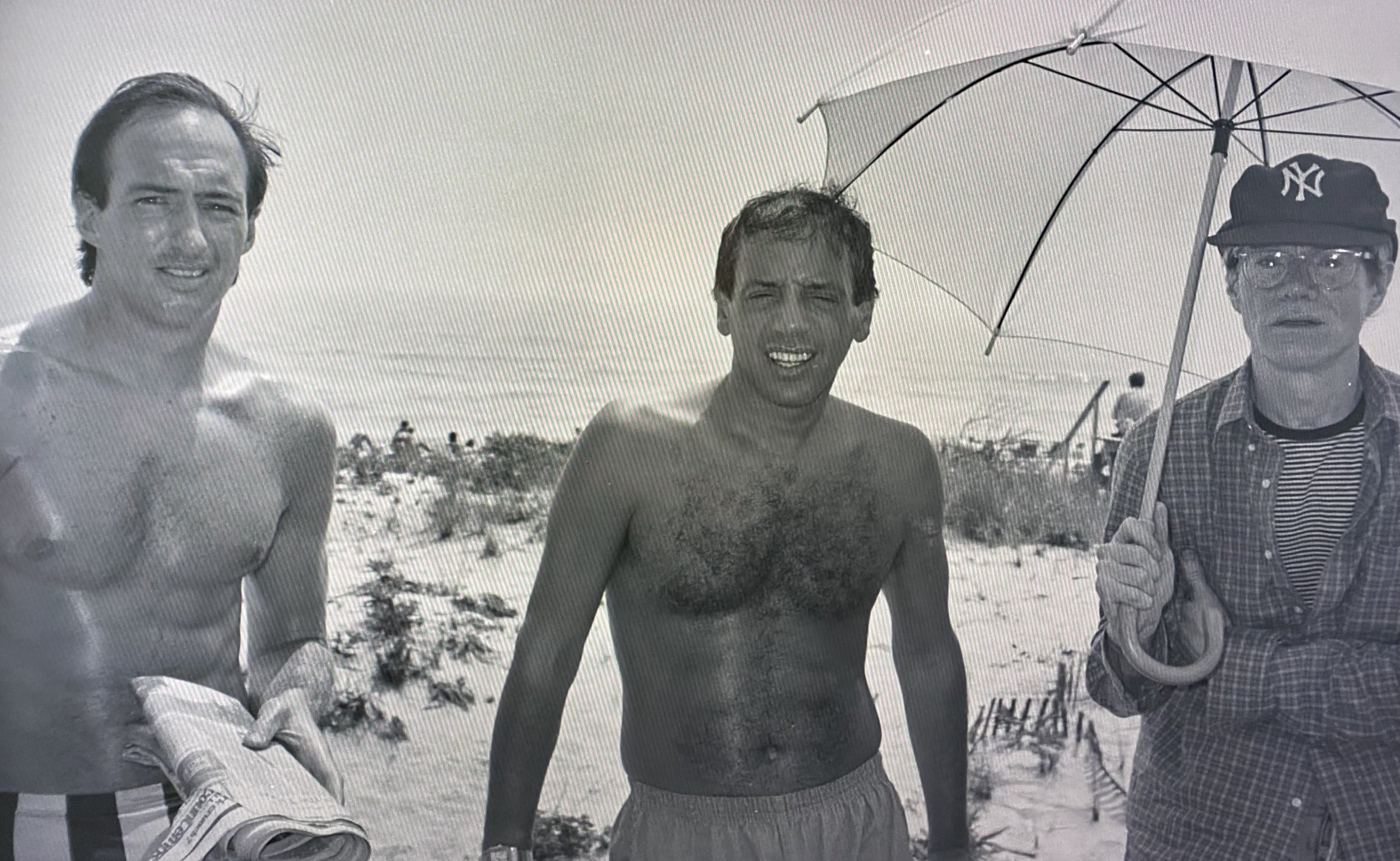
Christie’s
FEBRUARY 16, 2015
The Andy Warhol Diaries: 25 years on
A quarter of a century after they were first published, The Andy Warhol Diaries still have the power to shock, intrigue, amuse and amaze, as Pat Hackett, the writer who collaborated with Warhol on them, explains to Tom Teodorczuk:
It’s hard to regard anything Andy Warhol created as being undervalued. His art sells for colossal sums at auction — in recent years Green Car Crash (Green Burning Car I) (1963),Triple Elvis [Ferus Type] (1963) and Four Marlons (1966) have gone under the hammer at Christie’s for a combined total of more than $223 million million. Added to this, an unceasing cycle of exhibits and events reinforce the Pittsburgh’s pop artist’s prescience on consumerism, celebrity and glamour.
Yet if Warhol’s visuals held up a mirror to the allure and superficiality of modern life, the same can be said of his diaries. When they were first published in 1989, two years after his death, his journal scandalised New York society with the recounting of the vices of Mick Jagger, Martin Scorsese, Elizabeth Taylor and Truman Capote, among others, being at odds with an artist perceived as a study in passivity; one who once said, ‘You actually have more power when you shut up.’
To celebrate their 25th anniversary, The Andy Warhol Diaries has recently been published in a new edition and once more it is New York’s hottest art book — but for different reasons.
Pat Hackett, a writer and Warhol collaborator, edited the diaries which Warhol dictated to her between 1976 and five days before his death in February 1987. In a rare interview Hackett said the diaries reveal the real nature of Warhol: ‘Andy’s very close friends always experienced how talkative and opinionated he was. But the diaries deliver more than that because in the lengthy, dedicated sessions we had together he could just relax and be reflective, and so he often went deep.’
Warhol, she remembered, had long wanted to keep a diary at the Factory, his New York studio: ‘Then at a certain point, when he really needed to start keeping track of his cash business expenses, and I wanted to stop going to the Factory every day, we came to the agreement that he and I would do his own diary on the phone together every morning. At that point his life was becoming much more social… there were many more things being scheduled for him than when I had first met him in 1968.’
The diaries supply evidence the artist knew the value of his paintings would skyrocket following his death. On November 10 1983, in the aftermath of an auction sale he noted, ‘Thomas [his art dealer friend Thomas Ammann] bought a Flower painting for $40,000. It’s worth a lot more, though. Someday…’ In 2011 a Flower painting sold in an Artnet online auction for $1.32 million.
‘Have you ever thought about talking to a psychiatrist?’ Hackett asked. Warhol said, ‘I don’t need one. I have you.’
The diaries, Hackett says, were cathartic for Warhol. Towards the end of his life, she asked him, ‘Have you ever thought about talking to a psychiatrist?’ He said, ‘I don’t need one. I have you.’
In the diaries, Warhol records both bumping into Sean Penn in the street and witnessing him marrying Madonna; registering his distaste that Ronald Reagan isn’t mingling; predicting Kevin Costner’s stardom; being uncomplimentary about Jane Fonda and Diane Keaton but raving about Brooke Shields; and observing Danny De Vito is ‘so cute, we should all marry him’. They also include wider insights such as this from 1983 on the information age: ‘After years of more and more and more “people” in the news, you still don’t know anything more about people. Maybe you know more but you don’t knowbetter.’
But what were the criteria for publication from the 20,000 pages of the diary? ‘Whatever was most interesting,’ Hackett replies. Covering the opening of notorious Broadway flopMarilyn in 1983, Warhol ‘lied and said how great it was’, but the posthumous diaries are what he felt people should hear as opposed to what they wanted to hear.
‘Everybody was reading them like mad largely because we made a calculated decision not publish an index,’ Hackett recalls of the original 1989 release. ‘A lot of people at the time were extremely upset. But [Studio 54 co-owner] Steve Rubell did something great. He went on TV and said, “We’re all going crazy because of what Andy said about us in the Diaries but nobody can do anything because it’s all true!”’Bianca Jagger took issue with Warhol’s frequent unflattering accounts of her behaviour, refusing to believe Warhol had even written the diaries. ‘No friend is ever just one thing,’ Hackett responds. ‘He liked Bianca but he often did think she was dumb and said so — on other occasions he’d really enjoy being with her.’
Author Pat Hackett © 2014 Patrick McMullan; Reissue of the book.
Time has rendered the gossip aspect irrelevant, Hackett maintains. ‘Today people can read The Warhol Diaries purely for the unique historical and cultural document that it is. It’s Andy looking at people and the times they were in and constantly asking, What does it mean?” The diaries offer a riveting, exhaustive insight into how Warhol understood the causes and consequences of fame and art but was not blinded by them; a lover of ideas but ultimately a people person.
‘I love that it’s being reissued now,’ Hackett reflects, ‘because although it was a huge bestseller first time around, it did not get the serious reception it should have gotten. If ever a book deserved consideration and re-consideration it’s the Warhol Diaries.’



